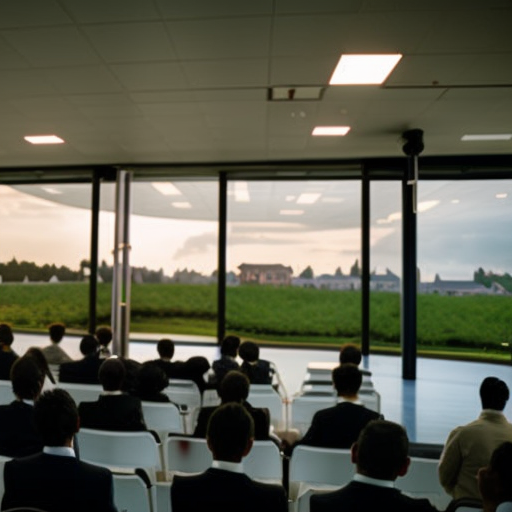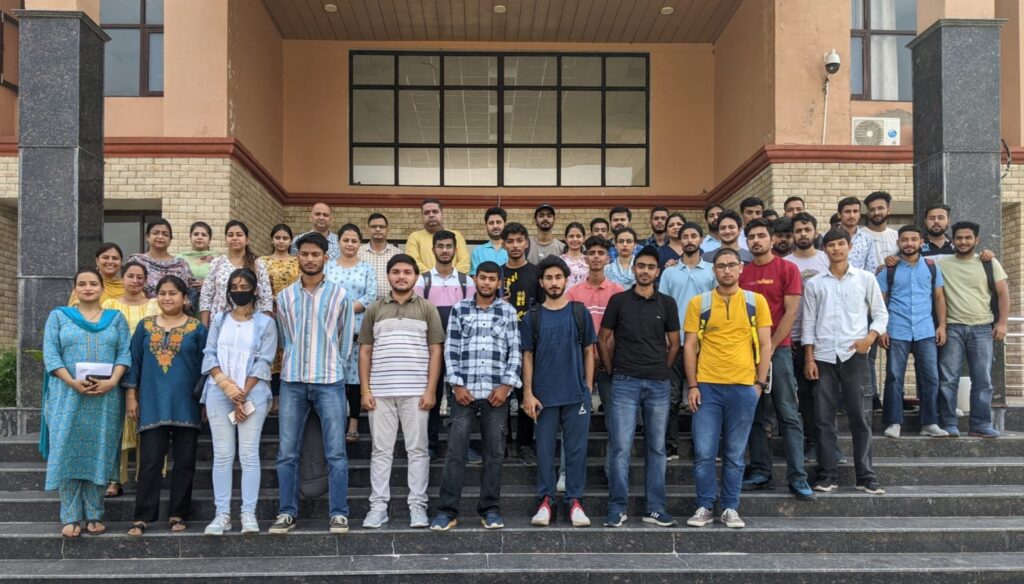UIET, Kathua Campus (JU) organizes an Expert Talk under Expert Lecture Series | Take One
UIET, Kathua Campus (JU) organizes an Expert Talk under Expert ... Take One Digital Network


Expert Lecture Series on Bulk Heterojunction Solar Cells
Date: August 3, 2023
Under the Expert Lecture Series, UIET, Kathua Campus (JU) organized an Expert Talk (6th in the series) on the topic “Bulk Heterojunction: A New Class of Solar Cells”. The resource person was Dr. Dinesh Pathak from The University of the West Indies, St. Augustine, Trinidad and Tobago. Dr. Pathak has also been awarded with Rising star award and International Union of crystallography award by Asian and Chinese crystallography society in Beijing City, China.

Bulk Heterojunction Solar Cells: A Promising Avenue for Advancing Solar Energy Technology
Dr. Pathak discussed that bulk heterojunction solar cells present a promising avenue for advancing solar energy technology. He said that their unique structure, broad light absorption range, and potential for cost-effective production make them an exciting prospect for the future of renewable energy. He added that the solar cells are based on a unique concept of blending two different semiconductor materials including polymer and fullerene derivative. He further highlighted that this blend forms a continuous network of electron-donor and electron-acceptor regions that provides an efficient pathway for charge separation and transport. Dr. Pathak also stressed that bulk heterojunction solar cells offer several other notable benefits that makes them suitable for various applications including integration into flexible electronic devices and building-integrated photovoltaics.
Supporting Sustainable Development Goals through Bulk Heterojunction Solar Cells
Dr. Meenakshi Kilam, Rector, Kathua Campus (JU) in her message eulogized the resource person for sparing his time and interacting with the students of Kathua Campus. She urged everyone to support and contribute to the progress of bulk heterojunction solar cells and other renewable energy solutions. She said that by working together, it is possible to usher a brighter, cleaner, and more sustainable future for generations to come. She further highlighted that the efficiency of bulk heterojunction solar cells has continued to rise and will show tremendous performance for the sustainable development.
Solar Energy as a Solution for Global Energy Demand and Climate Change
Dr. Sourabh Shastri, I/c Coordinator, UIET, Kathua Campus (JU) welcomed and introduced the resource person. He said that solar energy has emerged as a crucial solution to address the growing global energy demand while mitigating the impacts of climate change, where bulk hetero junction solar cells offers a revolutionary approach in harnessing sunlight.
Dr. Shivani Sharma coordinated the whole programme and Er.Arooshi Gupta delivered vote of thanks.
Dr. Narinder Kumar, Er. Sushant Gagal, Er. Sandeep Raj, Dr. Seema Jamwal, Er. Amarjeet Chopra, Er. Palvi Verma, Er. Komal Khadotra, Ms. Ritu Sharma, Dr. Nisha Choudhary, Er. Vishavjeet Singh, Er. Sourav Gupta, Mr. Gaurav Sharma, Dr. Zahin Ansari, Mr. Pranav Ratta, Ms. Ritika Goal, Ms. Tiharika Nath, Ms. Kamakshi and other teaching and non-teaching staff of the Campus participated in the talk.
(NOTE: PRESS RELEASE PUBLISHED AS RECEIVED)
SDGs, Targets, and Indicators in the Article
1. Which SDGs are addressed or connected to the issues highlighted in the article?
- SDG 7: Affordable and Clean Energy
- SDG 9: Industry, Innovation, and Infrastructure
- SDG 11: Sustainable Cities and Communities
The article discusses the topic of bulk heterojunction solar cells and their potential for advancing solar energy technology. This directly relates to SDG 7, which aims to ensure access to affordable, reliable, sustainable, and modern energy for all. Additionally, the article mentions the potential applications of these solar cells in flexible electronic devices and building-integrated photovoltaics, which align with SDG 9’s focus on promoting sustainable industrialization and fostering innovation. The mention of a “brighter, cleaner, and more sustainable future” also connects to SDG 11’s objective of making cities and human settlements inclusive, safe, resilient, and sustainable.
2. What specific targets under those SDGs can be identified based on the article’s content?
- SDG 7.2: Increase substantially the share of renewable energy in the global energy mix.
- SDG 9.4: Upgrade infrastructure and retrofit industries to make them sustainable.
- SDG 11.6: Reduce the adverse per capita environmental impact of cities.
The content of the article suggests that the development and utilization of bulk heterojunction solar cells contribute to increasing the share of renewable energy in the global energy mix (SDG 7.2). The mention of cost-effective production and potential applications in various devices indicates the potential for upgrading infrastructure and industries to make them sustainable (SDG 9.4). Furthermore, the focus on renewable energy and its benefits aligns with the goal of reducing the adverse environmental impact of cities (SDG 11.6).
3. Are there any indicators mentioned or implied in the article that can be used to measure progress towards the identified targets?
- Percentage of renewable energy in the global energy mix
- Investment in renewable energy research and development
- Number of buildings with integrated photovoltaic systems
- Reduction in greenhouse gas emissions from energy generation
The article does not explicitly mention specific indicators. However, the identified targets can be measured using indicators such as the percentage of renewable energy in the global energy mix, which can be tracked through energy production and consumption data. Investment in renewable energy research and development can be measured through funding allocations and research output. The number of buildings with integrated photovoltaic systems can be counted as an indicator of progress towards sustainable infrastructure. Finally, the reduction in greenhouse gas emissions from energy generation can be monitored to assess the environmental impact of renewable energy technologies.
SDGs, Targets, and Indicators Table
| SDGs | Targets | Indicators |
|---|---|---|
| SDG 7: Affordable and Clean Energy | Increase substantially the share of renewable energy in the global energy mix (Target 7.2) | – Percentage of renewable energy in the global energy mix – Investment in renewable energy research and development |
| SDG 9: Industry, Innovation, and Infrastructure | Upgrade infrastructure and retrofit industries to make them sustainable (Target 9.4) | – Number of buildings with integrated photovoltaic systems – Reduction in greenhouse gas emissions from energy generation |
| SDG 11: Sustainable Cities and Communities | Reduce the adverse per capita environmental impact of cities (Target 11.6) | – Number of buildings with integrated photovoltaic systems – Reduction in greenhouse gas emissions from energy generation |
Behold! This splendid article springs forth from the wellspring of knowledge, shaped by a wondrous proprietary AI technology that delved into a vast ocean of data, illuminating the path towards the Sustainable Development Goals. Remember that all rights are reserved by SDG Investors LLC, empowering us to champion progress together.
Source: takeonedigitalnetwork.com

Join us, as fellow seekers of change, on a transformative journey at https://sdgtalks.ai/welcome, where you can become a member and actively contribute to shaping a brighter future.







